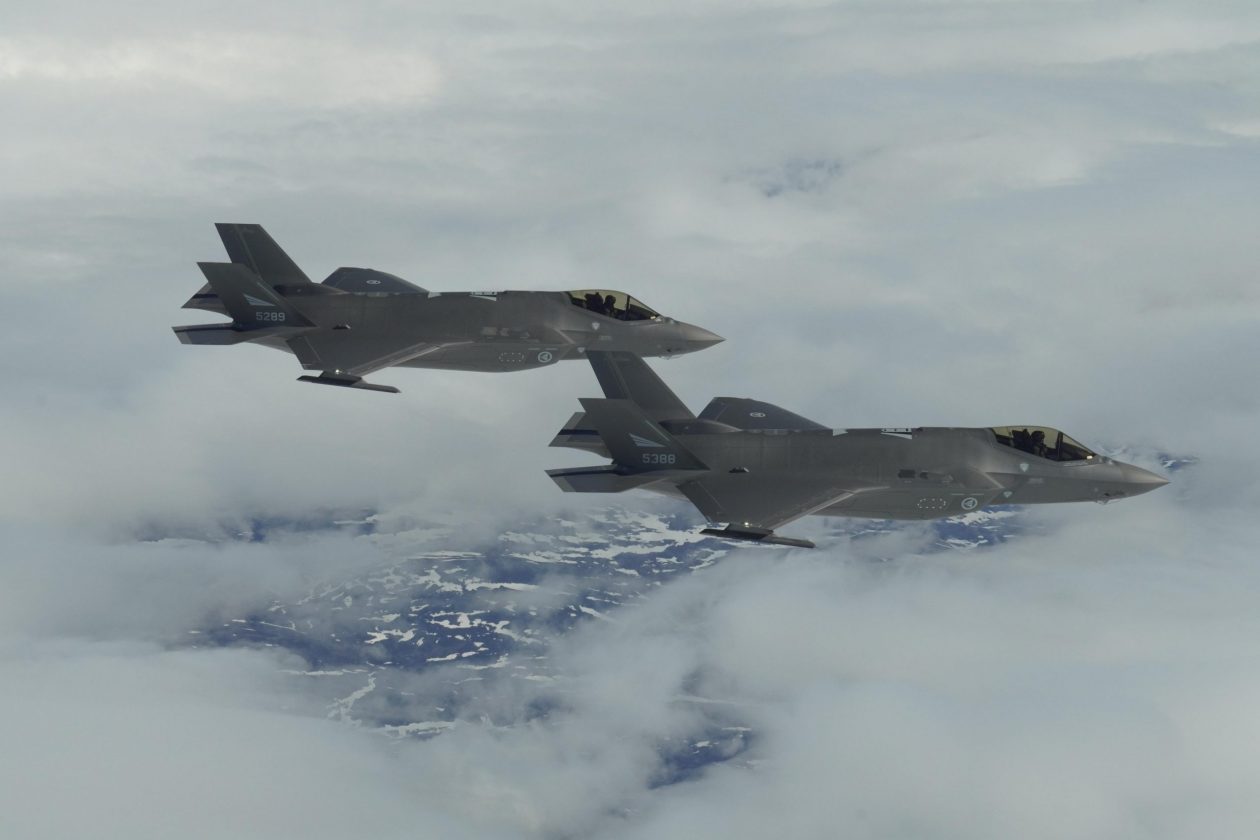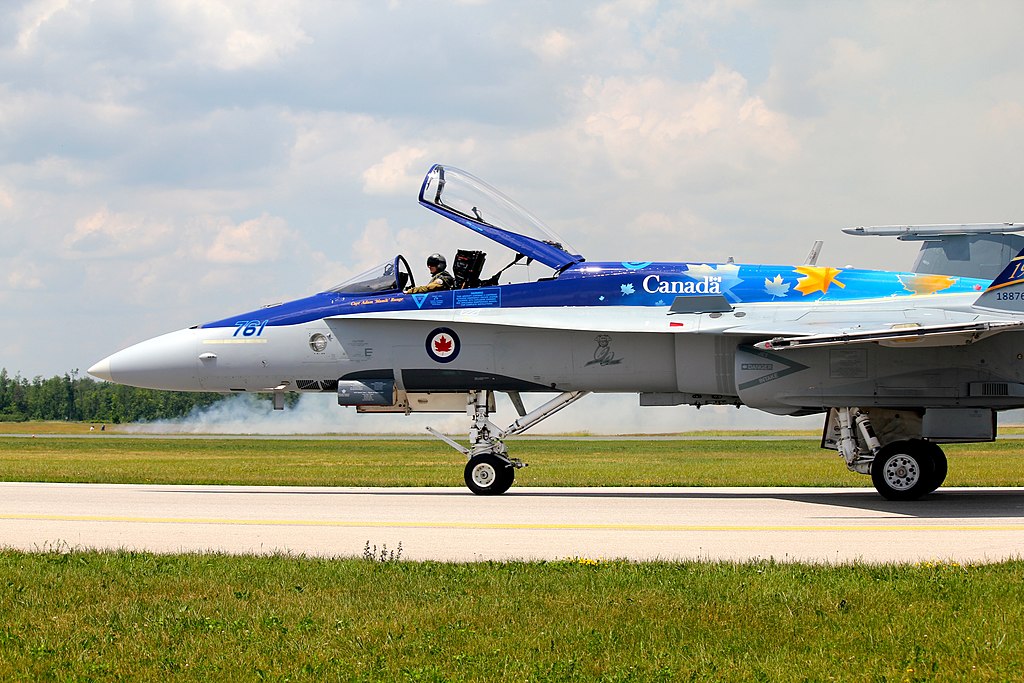Canadian Defense Minister Anita Anand, on January 9, announced plans to buy 88 F-35A Joint Strike Fighters (JSF) for CA$19 billion (US $14 billion).
Anand said in an online briefing that the Royal Canadian Air Force (RCAF) would receive its first four Lockheed Martin-made F-35s in 2026, with the following six in 2027 and another six in 2028. The remainder would come in subsequent years.
Russian Admiral Gorshkov Warship, Loaded With Hypersonic Missile, Fires On Aerial Targets In Norwegian Sea
Anand also noted that this purchase will be the RCAF’s largest fleet investment in the last thirty years and is necessary considering Russia’s invasion of Ukraine and China’s “increasingly assertive behavior in the Indo-Pacific.”
“The F-35 is a modern, reliable, and agile fighter aircraft used by our closest allies in missions across the globe. It is the most advanced fighter on the market and the right aircraft for our country,” Anand said.
“We see now that many of our allies … are using the F-35. I am focused on ensuring we deliver for the Canadian Armed Forces, our country, and our multilateral obligations. And with this aircraft, which, as I said, has matured, we are doing just that,” Anand explained.

Canada’s CF-18
These 88 new F-35A jets will replace the RCAF’s aging fleet of CF-18 Hornet, a variant of the American McDonnell Douglas F/A-18 Hornet, which beat the F-16 in 1980 in the final phase of the Fighter Aircraft Competition (FAC) launched by the Canadian government in 1977, as part of efforts to replace the F-104 Star Fighter aircraft.
Apart from the General Dynamics F-16, bids for the Canadian fighter jet contract were also submitted by the Grumman Corporation for the F-14, McDonnell Douglas for the F-15, and Panavia for the Tornado.

While all the competitors appeared to meet general Canadian requirements, the Canadian government selected the McDonnell Douglas F/A-18 and the General Dynamics F-16 as finalists in late 1978.
Despite being a favorite of the Canadian military, the F-15 was eliminated from the competition because it was costly. The F-14 and Tornado were also not chosen for the same reason.
Apart from its lower per-unit costs, the F-16 also had the advantage of being familiar with NATO forces. However, some in Canada believed that the limited range and radar capability of the F-16 made it unsuitable for Canadian air defense.

Furthermore, the F/A-18, because of its dual engines, was expected to have a lower attrition rate and therefore considered safer, partly compensating for its high per-unit price.
In April 1980, the Canadian government selected the F/A-18 over the F-16, contracting for 138 aircraft (113 single-seat, 25 two-seat trainers). The planes, designated the CF-18, cost Canadians approximately $2.8 billion. This was the largest fighter procurement in Canadian history at the time.
Also, the sale of F/A-18s to Canada was the first major export sale for this aircraft, establishing it as a major contender in the global fighter aircraft market.
The deliveries to the Canadian Forces began in 1982. The aircraft entered service in January 1983. The original estimated life expectancy of the CF-18 was until 2003, representing a service life of 20 years or a structural fatigue safe life of 6,000 hours.
Only a few years after these CF-18s went into service, measures were taken to extend their estimated life expectancy to 2020, representing an additional service of 18 years, almost twice the initial estimate.

Canada expects the entire F-35 fleet to be delivered by Lockheed Martin in time for the RCAF to phase its CF-18s out by the end of 2032. In the meantime, the country has acquired Australian F/A-18 to supplement the CF-18s. Also, Canada plans to upgrade its CF-18s to last until 2032.
CF-18 Specs And Service History
The CF-18 Hornet is a multi-role combat aircraft that can be utilized for air defense, air superiority, tactical support, training, aerobatic examination, and aerospace testing and evaluation.
It is available in two variants, CF-18A and CF-18B, with the former being a single-seat combat and ground attack aircraft and the latter fitted with two seats in the cockpit for the pilot and co-pilot.

Powered by two General Electric F404-GE-400 turbofan engines capable of producing 71.2kN thrust, the CF-18 has a maximum speed of 1,814 kilometers per hour.
Its combat radius and ferry ranges are 537 kilometers and 3,330 kilometers, respectively, with a service ceiling of up to 15,000 meters. The aircraft can climb at a rate of 254 meters per second.
The CF-18 can carry 6,215 kilograms of payload, including rockets, bombs, fuel tanks, and gun pods. It has nine hard points, one under the fuselage, four on wing stations, two on the sides of the fuselage, and two on the wingtips.
The aircraft is equipped with a 20mm M61A1 Vulcan internal Gatling gun (578 rounds), capable of firing 4,000 to 6,000 munitions per minute. It can be fitted with various bombs such as Paveway, Mk 82, Mk 83, Mk 84, GBU-10, -12, -16, and -24 laser-guided bombs.
The aircraft can also carry AIM-9 Sidewinders, AIM-120 AMRAAM, and AIM-7 Sparrow air-to-air missiles, and its air-to-ground armament comprises AGM-65 Maverick and CRV7 rockets.
The CF-18 is equipped with a high-powered night identification light fitted in the gun loading door. Also, a dummy canopy on the underside of the aircraft’s fuselage confuses the enemy while executing air-to-air combat missions.
The aircraft also features an infrared sensor pod, color LCDs, a night vision imaging system, a combat training system, an air combat guiding instrumentation system, and rough landing gear.
Over the past two decades, the CF-18 has participated in numerous conflicts, starting with the American-led Desert Shield and Desert Storm campaigns in 1990-91, in which Canada sent 24 CF-18s, which flew over 5,700 hours in approximately 2,700 sorties.

The CF-18s were deployed twice between 1997 and 2000 in response to the violence in the former Yugoslavia. The fleet undertook air patrols in support of NATO peacekeepers in Bosnia-Herzegovina and participated in the 1999 air campaign over Kosovo, during which the CF-18s conducted 10% of the NATO missions despite being a much smaller percentage of the total force.
In 2011, the CF-18s were deployed to southern Italy to participate in Operation Mobile/Operation Unified Protector, a multinational response to the crisis in Libya. Eight CF-18s flew missions over Libya with NATO to help enforce the no-fly zone over Libya.
In October 2014, Canada sent six CF-18 fighter aircraft to Iraq under “Operation Impact” to participate in air strikes against the terrorist group Islamic State (ISIS), together with the US, the UK, France, Australia, Denmark, the Netherlands, Belgium, Jordan, Saudi Arabia, Bahrain, the UAE, and other countries.
- Contact the author at tanmaykadam700@gmail.com
- Follow EurAsian Times on Google News




